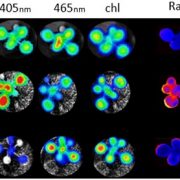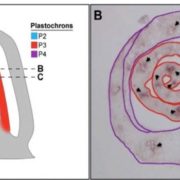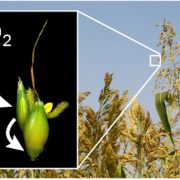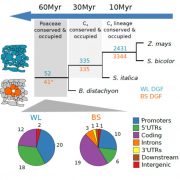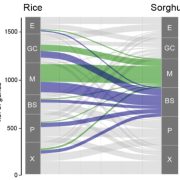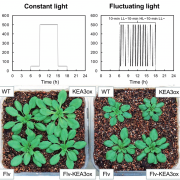Improved soybean photosynthesis and yield by accelerating recovery from photoprotection
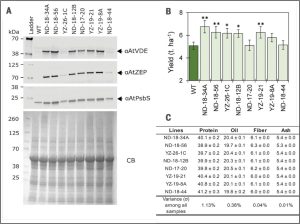 Enhancing crop yield for future food supplies involves increasing photosynthetic efficiency, which can be achieved by improving photoprotection through non-photochemical quenching (NPQ). NPQ enables leaves to dissipate excess absorbed light energy as heat, minimizing the negative effects of photodamage. Upon transition to shade conditions, the photoprotective mechanism relaxes, allowing the plants to make full use of the limited light they capture. The photoprotection process is regulated by components of the xanthophyll cycle like violaxanthin de-epoxidase (VDE), zeaxanthin epoxidase (ZEP), and Photosystem II (PSII) subunit S (PsbS). The major limitation of this mechanism is that upon transition to shade it relaxes slowly, which significantly lowers the photosynthetic efficiency of the plant. In this study, De Souza et. al. optimized the regulation of photoprotection in soybean through bioengineering to increase photosynthetic efficiency. The authors targeted three important components of xanthophyll cycle, VDE, PsbS, and ZPE, that are the key regulators of NPQ induction and relaxation. Transgenic soybean plants overexpressing Arabidopsis VDE, PsbS, and ZEP proteins showed a more rapid NPQ relaxation compared to the non-transgenic background upon transition to shade and up to 33% more seed yield. The study, together with a previous such study in tobacco, opens avenues for increasing crop yield by targeting improved photosynthetic efficiency via optimized photoprotection of the photosynthetic machinery under light fluctuations. (Summary by Mahesh Kumar Panda @maheshkumarMnP) Science 10.1126/science.adc9831
Enhancing crop yield for future food supplies involves increasing photosynthetic efficiency, which can be achieved by improving photoprotection through non-photochemical quenching (NPQ). NPQ enables leaves to dissipate excess absorbed light energy as heat, minimizing the negative effects of photodamage. Upon transition to shade conditions, the photoprotective mechanism relaxes, allowing the plants to make full use of the limited light they capture. The photoprotection process is regulated by components of the xanthophyll cycle like violaxanthin de-epoxidase (VDE), zeaxanthin epoxidase (ZEP), and Photosystem II (PSII) subunit S (PsbS). The major limitation of this mechanism is that upon transition to shade it relaxes slowly, which significantly lowers the photosynthetic efficiency of the plant. In this study, De Souza et. al. optimized the regulation of photoprotection in soybean through bioengineering to increase photosynthetic efficiency. The authors targeted three important components of xanthophyll cycle, VDE, PsbS, and ZPE, that are the key regulators of NPQ induction and relaxation. Transgenic soybean plants overexpressing Arabidopsis VDE, PsbS, and ZEP proteins showed a more rapid NPQ relaxation compared to the non-transgenic background upon transition to shade and up to 33% more seed yield. The study, together with a previous such study in tobacco, opens avenues for increasing crop yield by targeting improved photosynthetic efficiency via optimized photoprotection of the photosynthetic machinery under light fluctuations. (Summary by Mahesh Kumar Panda @maheshkumarMnP) Science 10.1126/science.adc9831


